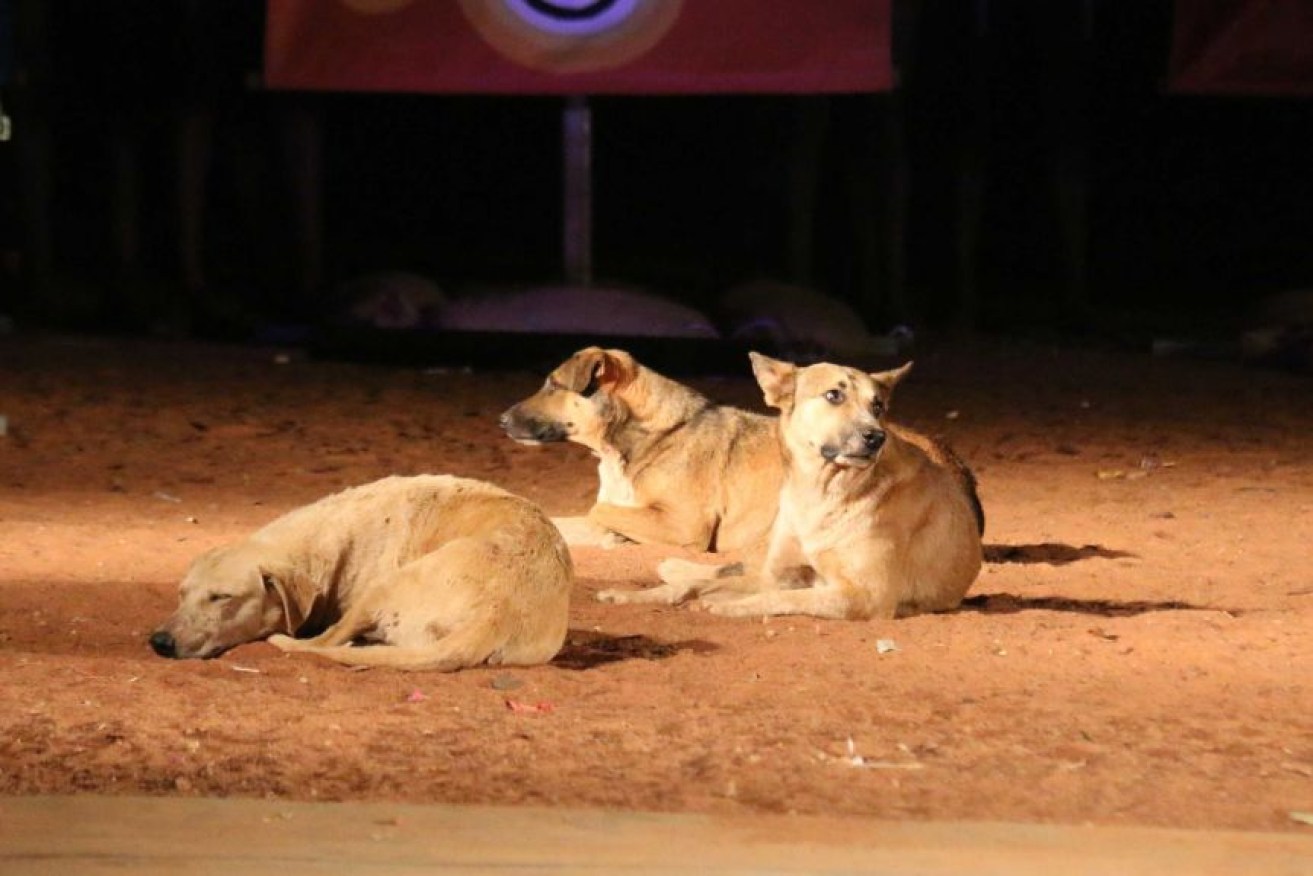Exotic tick-borne disease ehrlichiosis expected to kill thousands of dogs in NT

Some vets say they have seen symptoms of the disease in NT dogs for years. Photo: ABC News/Stephanie Zillman
WARNING: SOME PEOPLE MAY FIND THE FOLLOWING IMAGES DISTRESSING
Nearly 1000 dogs may have already died from an exotic tick-borne disease that is rapidly spreading through remote Indigenous communities, according to a Top End vet.
Ehrlichiosis was believed not to exist in Australia until it was confirmed in WA’s Kimberley region in May and the Northern Territory in June.
The bacterial disease causes fever, lethargy, enlarged lymph nodes, under-skin bleeding, weight loss and can lead to death in dogs.
Bonny Cumming, a vet with Animal Management in Rural and Remote Indigenous Communities (AMRRIC) working across the Top End, said it was hard to gauge how many dogs had died from ehrlichiosis.
However, she expected by the end of the 2020–21 wet season, dog deaths would “be in the thousands”.
“What we are seeing is that in some regions [ehrlichiosis] is really exploding,” Dr Cumming said.
“It has a pretty high mortality rate, especially for younger or older dogs that are immune compromised – it is really heavily impacting those dogs.
“We are seeing that households that might have had five dogs now only have one.”

One of the symptoms of ehrlichiosis is subcutaneous bleeding. Photo: ABC/Dr Samantha Phelan/Roper Gulf Regional Council
Roper, Gulf and Daly regions hardest hit
The NT’s chief veterinary officer, Sue Fitzpatrick, said ehrlichiosis was now in most local government areas, including Darwin, Palmerston, the Darwin rural area, Katherine and many remote communities.
Dr Fitzpatrick could not confirm how many dogs may have died but said more than 500 dogs from across the NT had been tested to date, with approximately half of the dogs showing signs testing positive for ehrlichiosis.
“Owners of infected dogs are being asked to ensure that the dog is treated, on effective tick control and to restrict the movement of the dog to reduce the risk of the spread of the disease,” she said.
“If people suspect their dog is showing signs of the disease, contact your local vet to arrange an appointment.”

A dog displaying symptoms of ehrlichiosis, including weight loss and corneal oedema (cloudy eyes). Photo: ABC/Dr Stephen Cutter AMRRIC
In Western Australia, the Kimberley has been hardest hit by the disease and small numbers of cases have been traced to the Pilbara, Gascoyne and northern Goldfields regions.
WA chief veterinary officer Michelle Rodan said ehrlichiosis was considered endemic in the Kimberley.
“We tested around 400 dogs [in the Kimberley] and around 50 per cent were positive,” she said.
“What we’ve found is rapid treatment with antibiotics has given the best resolution [but] in the more severe cases, we’re getting in the order of 8 to 10 per cent of those dogs dying as a result of it.”
Dr Rodan said historical testing had not found the disease in wild dog populations in WA, but the high numbers of strays in the region could pose a challenge to controlling the spread of the disease.
Travellers leaving the Kimberley and heading south are also reminded of the dog movement conditions in place to reduce the spread of ehrlichiosis to southern areas of WA.

Ehrlichiosis is a tick-borne disease that is spreading rapidly through Northern Territory dogs. Photo: ABC/AMRRIC
‘Ticks crawling up walls’
Dr Cumming said treating the disease in remote Indigenous communities was very challenging, especially during the wet season when a single female tick could lay up to 3000 eggs.
“While [ehrlichiosis] can be treated, it is difficult to treat and requires a long course of antibiotics, so that makes it really quite challenging in remote communities that only have veterinary access twice a year,” she said.
“One of the things that AMRRIC has been advocating for is for community stores stocking appropriate animal health products that include tick preventatives.
“Another aspect is looking at environmental tick control … because in some regions over the wet season, we can literally see ticks crawling up the walls in their thousands.
“So when you’ve got those sorts of conditions … it’s really important that there’s a coordinated effort to control those ticks.”







